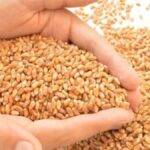Main Points In Hindi (मुख्य बातें – हिंदी में)
-
सरकारी पहल: भारत के स्वास्थ्य और परिवार कल्याण मंत्रालय ने साँप के काटने को "सूचित बीमारी" घोषित किया है, जिससे इसके मामलों और मौतों की रिपोर्टिंग अनिवार्य हो गई है।
-
सांप के काटने से संबंधित आंकड़े: हर साल भारत में लगभग 50,000 मौतें और 3-4 मिलियन सर्पदंश के मामले सामने आते हैं, जो वैश्विक स्तर पर सर्पदंश से होने वाली मौतों का लगभग आधा हिस्सा है।
-
जोखिम भरी आबादी: किसान और आदिवासी समुदाय जैसे समूह साँप के काटने के मामलों में उच्च जोखिम में हैं, जिसके कारण मृत्यु दर और विकलांगता बढ़ सकती है।
-
राष्ट्रीय कार्य योजना: मंत्रालय ने सर्पदंश के मामलों और मौतों को आधा करने के उद्देश्य से मार्च में "सर्पदंश की रोकथाम और नियंत्रण के लिए राष्ट्रीय कार्य योजना (NAPSE)" शुरू की है।
- डेटा संग्रहण और निगरानी प्रणाली: योजना का एक महत्वपूर्ण उद्देश्य सर्पदंश के मामलों और मौतों की प्रभावी निगरानी प्रणाली विकसित करना है, जिससे इसके बारे में सटीक डेटा एकत्रित किया जा सके और इससे संबंधित समस्याओं का समाधान किया जा सके।
Main Points In English(मुख्य बातें – अंग्रेज़ी में)
Here are 4 main points from the provided content:
-
Public Health Declaration: The Ministry of Health and Family Welfare (MoHFW) of India has declared snakebite cases and deaths as "notifiable diseases" due to rising public health concerns related to snakebites, which result in approximately 50,000 deaths annually and contribute to half of the global snakebite-related fatalities.
-
Vulnerable Populations: The letter from the central health secretary highlights that farmers and tribal populations are at higher risk of snakebites. It urges state health secretaries to report snakebite cases and deaths in accordance with public health laws.
-
Lack of Resources: There is a significant shortage of trained healthcare personnel and facilities to treat snakebite victims, despite the availability of polyvalent antivenom that is effective against the most common snakes responsible for 90% of snakebites.
- National Action Plan: In March, MoHFW launched the National Action Plan for Snakebite Envenoming (NAPSE) to address the issue, aiming to reduce snakebite fatalities by half by 2030. The plan focuses on enhancing monitoring of snakebite cases and deaths to improve response strategies and inform stakeholders about high-risk areas and factors contributing to fatalities.


Complete News In Hindi(पूरी खबर – हिंदी में)
आईएएनएस
नई दिल्ली
भले ही साँप के काटने से सार्वजनिक स्वास्थ्य संबंधी चिंताएँ बढ़ रही हैं, स्वास्थ्य और परिवार कल्याण मंत्रालय (MoHFW) ने भारत में साँप के काटने के मामलों और मौतों को “सूचित बीमारी” घोषित कर दिया है।
मंत्रालय के आंकड़ों के अनुसार, भारत में सालाना लगभग 50,000 मौतें अनुमानित 3-4 मिलियन सर्पदंश के कारण होती हैं। यह वैश्विक स्तर पर सर्पदंश से होने वाली मौतों का आधा हिस्सा है। हालाँकि, मामले बेहद कम रिपोर्ट किए जाते हैं।
“सांप का काटना सार्वजनिक स्वास्थ्य चिंता का मुद्दा है और कुछ मामलों में, वे मृत्यु दर, रुग्णता और विकलांगता का कारण बनते हैं। किसान, आदिवासी आबादी आदि अधिक जोखिम में हैं, ”केंद्रीय स्वास्थ्य सचिव पुण्य सलिला श्रीवास्तव ने सभी राज्यों और केंद्र शासित प्रदेशों के स्वास्थ्य सचिवों को संबोधित एक पत्र में कहा।
पत्र में कहा गया है, “आपसे अनुरोध है कि राज्य सार्वजनिक स्वास्थ्य अधिनियम या अन्य लागू कानून के तहत प्रासंगिक प्रावधानों के तहत सर्पदंश के मामलों और मौतों को ‘अधिसूचित रोग’ बनाया जाए।”
पत्र में सभी सरकारी और निजी स्वास्थ्य सुविधाओं (मेडिकल कॉलेजों सहित) से आग्रह किया गया है कि वे “संलग्न प्रारूप में सभी संदिग्ध, संभावित सर्पदंश के मामलों और मौतों की रिपोर्ट करना अनिवार्य करें”।
देश में लगभग 90% सर्पदंश के लिए कॉमन क्रेट, इंडियन कोबरा, रसेल वाइपर और सॉ-स्केल्ड वाइपर जिम्मेदार हैं।
जबकि पॉलीवैलेंट एंटी-स्नेक वेनम (एएसवी) – इन चारों के खिलाफ एंटीबॉडी के साथ – 80% मामलों में प्रभावी है, सर्पदंश के रोगियों के इलाज के लिए प्रशिक्षित मानव संसाधनों और स्वास्थ्य सुविधाओं की कमी चिंता का कारण बनी हुई है। अन्य प्रमुख बाधाएँ घटना, रुग्णता, मृत्यु दर, सामाजिक-आर्थिक बोझ, उपचार पैटर्न आदि पर डेटा की कमी हैं।
मार्च में, MoFHW ने सर्पदंश की समस्या के समाधान के लिए सर्पदंश की रोकथाम और नियंत्रण के लिए राष्ट्रीय कार्य योजना (NAPSE) शुरू की। श्रीवास्तव ने कहा, कार्ययोजना का लक्ष्य “वर्ष 2030 तक सर्पदंश से होने वाली मौतों को आधा करना” है।
योजना में सर्पदंश प्रबंधन, नियंत्रण और रोकथाम में शामिल हितधारकों के परिभाषित रणनीतिक घटकों, भूमिकाओं और जिम्मेदारियों को शामिल किया गया है।
एनएपीएसई का एक मुख्य उद्देश्य देश में सर्पदंश के मामलों और मौतों की निगरानी को बढ़ावा देना है।
श्रीवास्तव ने “सर्पदंश की घटनाओं और मौतों पर सटीक नज़र रखने के लिए एक मजबूत निगरानी प्रणाली” विकसित करने का आह्वान किया। यह हस्तक्षेपों की प्रभावशीलता को सूचित करने और मूल्यांकन करने के लिए मूल्यवान डेटा प्रदान करेगा। श्रीवास्तव ने कहा, इससे हितधारकों को “सटीक बोझ, उच्च जोखिम वाले क्षेत्रों, सर्पदंश पीड़ितों की मौत के लिए जिम्मेदार कारकों” को समझने में भी मदद मिलेगी, जिसके परिणामस्वरूप पीड़ितों के नैदानिक प्रबंधन में सुधार होगा।
Complete News In English(पूरी खबर – अंग्रेज़ी में)
By IANS
New Delhi
Despite growing public health concerns about snake bites, the Ministry of Health and Family Welfare (MoHFW) has officially declared cases and deaths from snake bites in India as a “notifiable disease.”
According to ministry data, around 50,000 deaths in India each year are estimated to result from 3 to 4 million snake bites, which accounts for half of the global deaths from snake bites. However, many cases go unreported.
“Snake bites are a public health issue and can lead to mortality, morbidity, and disability in some cases. Farmers and tribal populations are at greater risk,” wrote Central Health Secretary Punya Salila Srivastava in a letter to health secretaries of all states and Union territories.
The letter requested that snake bite cases and deaths be designated as “notifiable diseases” under state public health laws or other relevant regulations.
It also urged all public and private health facilities (including medical colleges) to make it mandatory to report all suspected or potential snake bite cases and deaths using a specified format.
About 90% of snake bites in India are caused by the Common Krait, Indian Cobra, Russell’s Viper, and Saw-scaled Viper.
While Polyvalent Anti-Snake Venom (ASV), which targets these four snakes, is effective in 80% of cases, there is a significant shortage of trained personnel and health facilities for treating snake bite victims. Additionally, there are major barriers to understanding the situation due to a lack of data on incidents, morbidity, mortality, and socioeconomic impacts.
In March, the MoHFW initiated the National Action Plan for Snakebite Prevention and Control (NAPSE) to tackle this issue. Srivastava stated that the plan aims to “reduce deaths from snake bites by half by 2030.”
The plan outlines specific strategies, roles, and responsibilities for stakeholders involved in snake bite management, control, and prevention.
A key goal of NAPSE is to improve the monitoring of snake bite cases and deaths in the country.
Srivastava emphasized the need for a strong monitoring system to accurately track incidents and deaths from snake bites. This will provide valuable data to inform and evaluate intervention effectiveness, helping stakeholders understand the “exact burden, high-risk areas, and factors responsible for deaths among snake bite victims,” ultimately improving clinical management for those affected.








